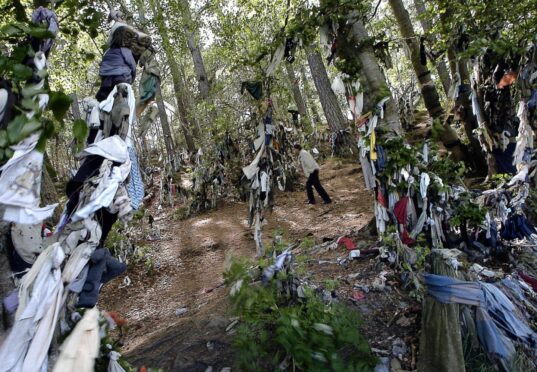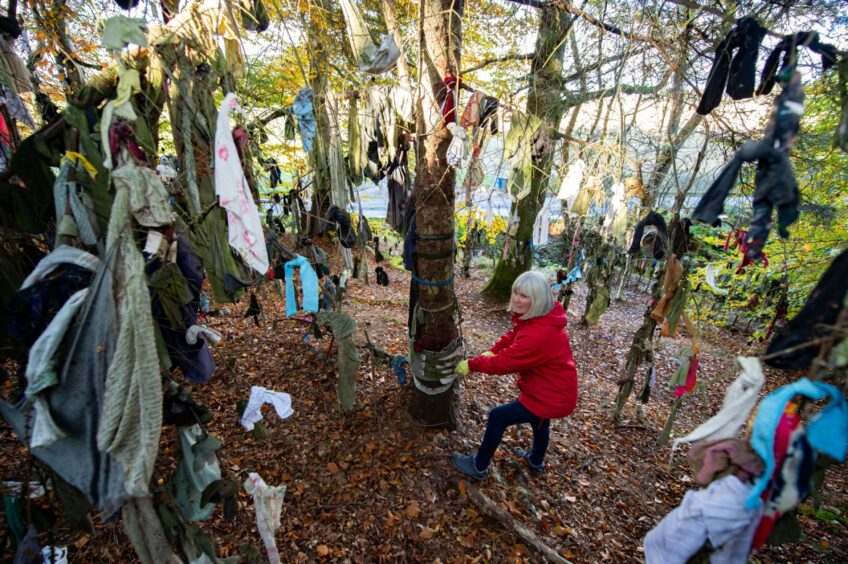A “mystery person” who cleared an ancient pilgrimage site on the Black Isle did not do so with the permission of Forestry and Land Scotland (FSL).
Concerns were raised over the weekend that an ancient site near Munlochy called the Clootie Well had been cleared of all its cloots.
The historic well has for centuries received offerings from visitors looking for healing or for prayers to be answered.
The cloots are dipped in the water of the well before being hung to a tree. People believe the cloot then takes on magical properties that can help heal ailments or even help with pregnancy.
A spokesman for FSL has said it did not co-ordinate the clear up operation, and in fact supported people who wanted to put up a cloot at the ancient site.
The Press and Journal reported from the well in 2019, when it was cleared in a joint operation between Forestry and Land Scotland and the local community.
The latest clear up, that has removed all the cloots from the area, was completed by a “mystery woman”.
One man who says he saw the woman removing all the cloths from the trees wrote on the Black Isle Notice Board Facebook page: “I have seen a lady removing all the cloth from Munlochy Clootie Well including the natural ones, everything! She’s saying it’s a dump.”
Speaking on Tuesday morning’s Good Morning Scotland on BBC Radio Scotland, Paul Hibbard, visitor service manager for FSL, said: “Rangers visit regularly and will remove inappropriate items there.
“A couple of years ago we organised a large clean up in association with the community council and other interested parties.
“But overall we are very happy for people to leave biodegradable cloots at the well.
“It is a very ancient tradition.”
What is a clootie well?
Clootie wells, like the one at Munlochy, are found in Celtic places like Cornwall and Ireland and are linked to ancient healing traditions.
The rag or cloot is dipped in the well and tied to a tree in the hope that a sickness or ailment will fade as the rag disintegrates.
FLS says that a biodegradable cotton or wool cloot is best for the environment.
The purpose of FLS is to manage forests and land owned by the Scottish Government in a way that supports and enables economically sustainable forestry, conserves and enhances the environment; and delivers benefits for people and nature.

